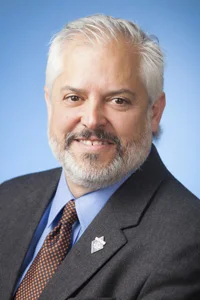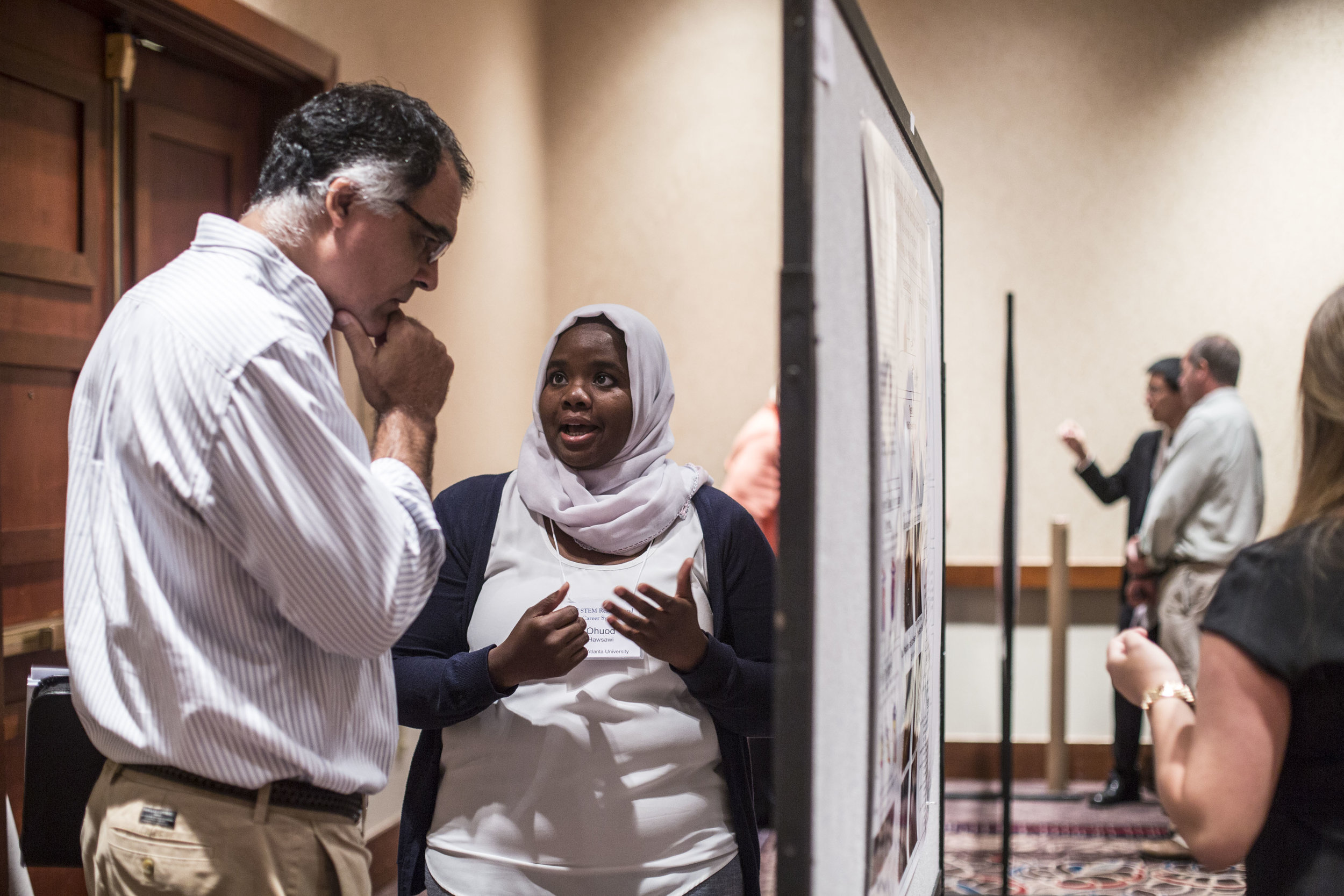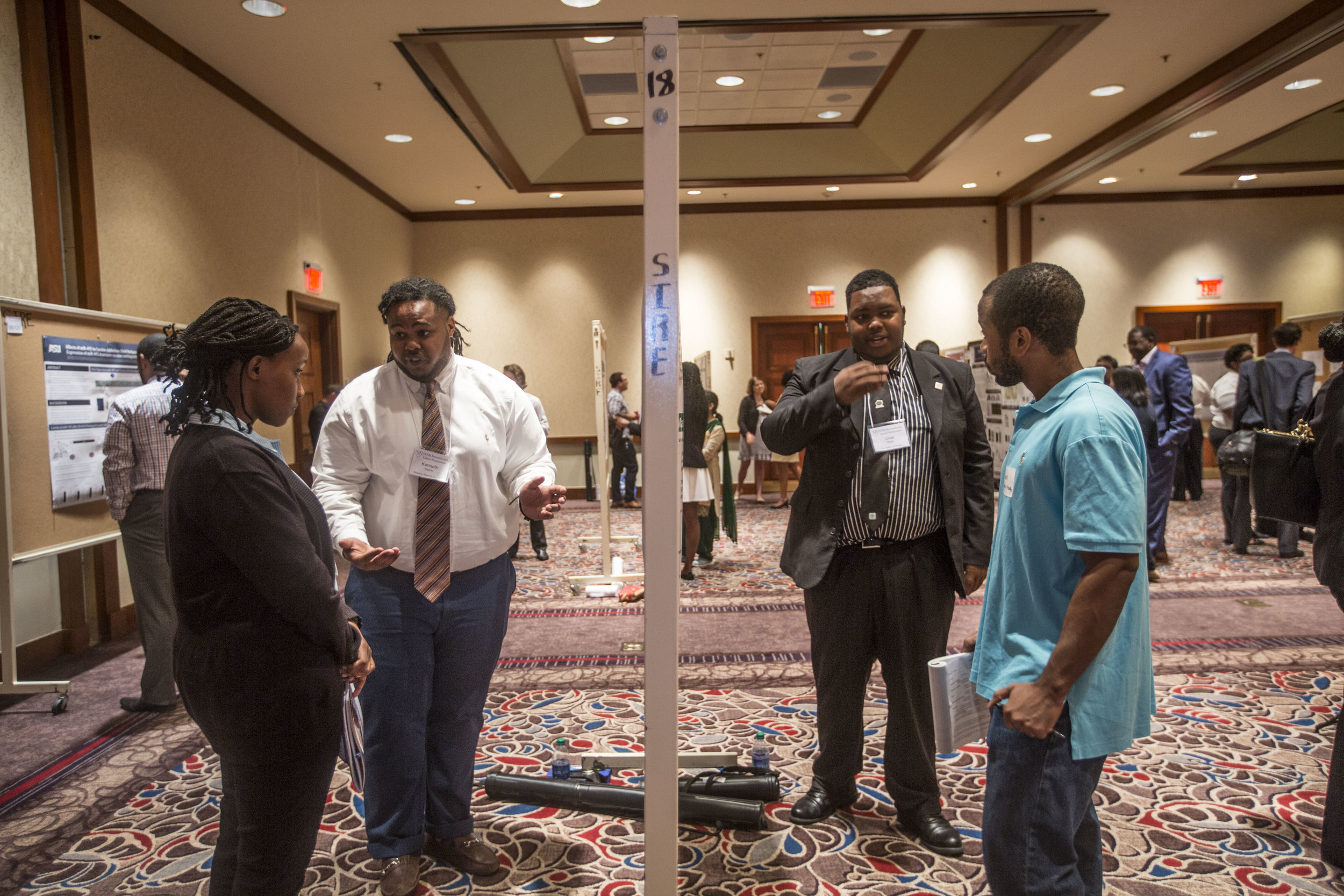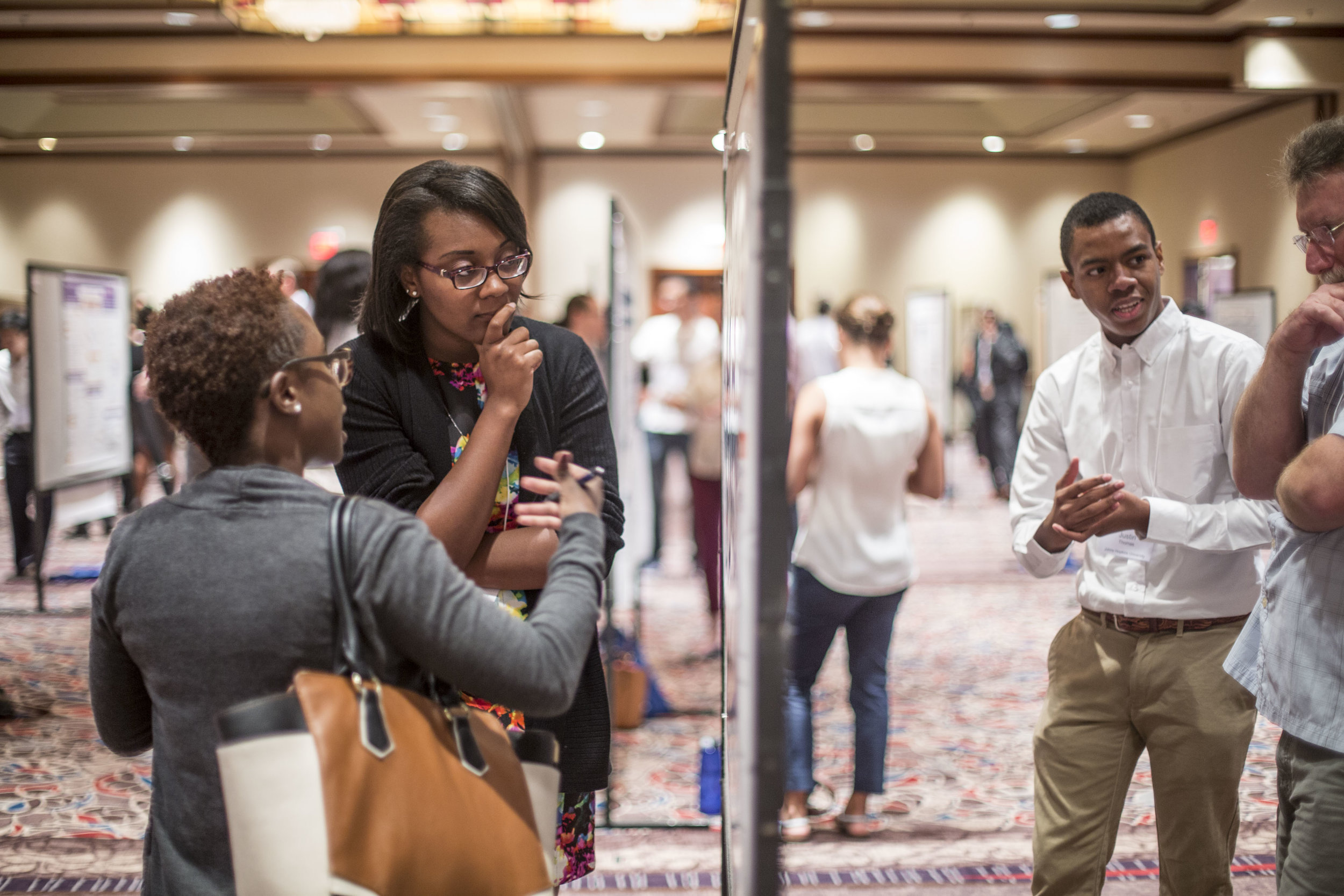Emory STEM Symposium Draws Diverse Students from Around the Country
/Connor Morozumi
The Laney Graduate School convened the 4th annual Emory STEM Research and Career Symposium on September 18th-20th drawing over 115 students from across the country and from several international universities. Students were welcomed by Emory alumni Dr. Chad R. Jackson, a current AAAS Science and Technology Policy Fellow, and Dr. Michael L. Lomax, President and Chief Executive Officer of the United Negro College Fund. The symposium, held at the Emory Conference Center, also featured breakout sessions, student oral talks, and two poster sessions.
For first year Emory PhD student Brent Allman (Population Biology, Ecology, and Evolution) the STEM symposium was a way to connect with a diverse group of young researchers, some he had met at previous conferences and was able to reconnect with. “It’s a way to build a community of students who care about diversity,” he said in a bustling morning poster session.
Undergraduate and graduate students presented on a wide breadth of research topics. Topics that ranged from brain imaging to vocal learning in songbirds and from geospatial mapping of methamphetamine labs in Georgia to wildlife-human Dengue disease dynamics. Similarly broad were the universities and organizations represented at the STEM Symposium. Students from historically black universities such as Spelman College, Morehouse School of Medicine, Clark Atlanta University, Tuskegee University, Xavier University of Louisiana, and Morgan State University in Baltimore, Maryland as well as Hispanic-serving Institutions such as the University of Puerto Rico presented posters and gave oral presentations. Students traveled across the country from institutions including Oregon Health & Sciences University, Purdue, University of California San Diego, and Texas A&M University to attend the symposium.
Heather Goldsborough, an undergrad student at University of Maryland Eastern Shore, attended the symposium to get a better sense of Master’s programs that she might be interested in applying for soon after she graduates. She said she appreciated Dr. Jackson’s keynote remarks about figuring out the purpose of attending graduate school before embarking on the endeavour.
Third year graduate student Binta Jalloh (Genetics and Molecular Biology) presented her research on intellectual disability in flies that was supported with assistance from the EmoryNIH-funded Initiative to Maximize Student Development (IMSD Program). She remarked that there was high investment of faculty members at Emory in graduate studies and that being at Emory was as she put it, “a blessing.”
Breakout sessions included information about Emory’s graduate programs and several undergraduates presenting posters expressed interest in the MD/PhD program here at Emory. Sessions also included Research Opportunities for Undergraduates at Emory and Beyond, the Emory PhD Admissions Process, and Developing a Career Plan and Individual Development Plans.
The Symposium is part of the Laney Graduate School’s Diversity in Action initiative to increase diversity in the graduate population at Emory. Partners for the event included the School of Medicine, Emory College of Arts and Sciences, the Rollins School of Public Health, the Office of Postdoctoral Education and the Emory University Office of the Provost. GDBBS was one of seven major graduate training programs and divisions at Emory involved in the symposium. The successful three-day event showcased young researchers from diverse backgrounds sharing researchpresentations, mentoring, and networking with faculty members and alumni here at Emory.

















